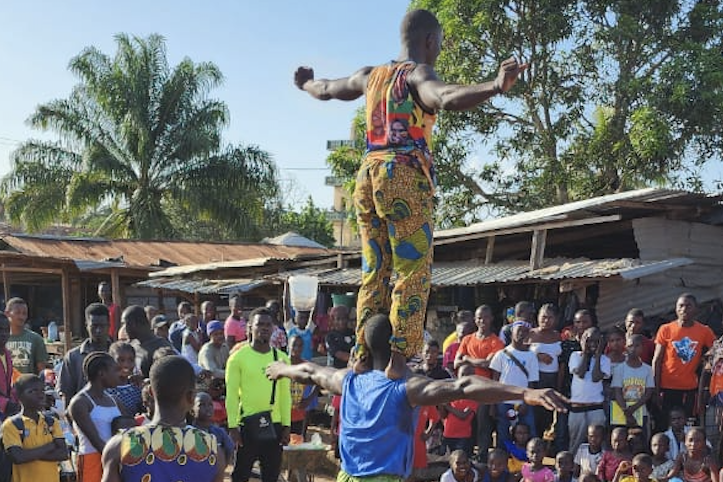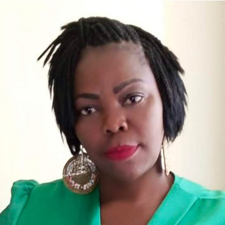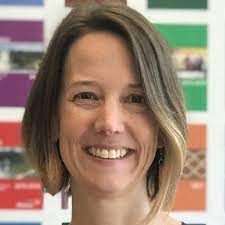Integrating COVID-19 Vaccine Demand Generation Activities into Primary Health Care: Examples from Liberia and Nigeria
Integrating COVID-19 Vaccine Demand Generation Activities into Primary Health Care: Examples from Liberia and Nigeria
 Lindsey Leslie
Lindsey Leslie
 Saratu Olabode-Ojo
Saratu Olabode-Ojo
 Juliet Wilson
Juliet Wilson
 Dr. Samuel Usman
Dr. Samuel Usman
 Erica Nybro
Erica Nybro
Published on June 15, 2023

This post explores integration through COVID vaccine demand generation and community engagement with two examples: one example from Breakthrough ACTION Liberia, where street theater was used to address concurrent myths about insecticide-treated bed nets and COVID-19, and another from the Core Group Partners Project (CGPP) in Nigeria, where they integrated COVID-19 messaging into their routine in-person polio vaccination campaign using trusted community volunteers.
About this blog series
Emergency funding for COVID-19 has begun to shift towards activities that integrate the COVID-19 vaccine into life course vaccination programs within the primary health care (PHC) system. Governments, donors, and program implementers are building on lessons learned from COVID-19 to build resilient health systems that can accommodate new vaccines and withstand future pandemics. Identifying ways to integrate COVID-19 vaccination activities into standard primary health care services, USAID and WHO have shared guidance to assist countries with this integration process.
The USAID integration definition builds on the WHO/UNICEF vaccination integration definition and is articulated as follows:
The partial or full adoption of COVID-19 response activities – across prevention, diagnosis, care and treatment – into national program services, including immunization programmes, primary health care (PHC), and any other relevant health services with the overall aim of improving program efficiency and sustainability, enhancing demand and improving user satisfaction, achieving and maintaining satisfactory coverage, and addressing inequities.
As many implementing partners and government representatives work to follow these guidelines, many questions remain regarding how to operationalize integration. One of the most common opportunities for integration is at the service delivery site, where COVID-19 vaccinations are provided alongside routine immunizations or other health services. But the health system is far larger and more complex than service delivery. Therefore, USAID’s support for COVID-19 integration into health systems aligns with WHO’s guidance and considers seven key areas:
Leadership & governance
Health systems financing
Service delivery
Health workforce
Demand generation & community engagement
Health information systems
Supply chain management
This is the first in a series of seven blog posts highlighting examples and lessons learned regarding integration of COVID-19 into primary health care. Each post will focus on one of the seven focus areas listed above. The experiences included in these posts are meant to provide practical examples of integration. The activities featured are not meant to be an exhaustive list, nor do they represent the gold standard. We hope that through reading these examples, governments and implementing partners hear how other countries have addressed and operationalized integration in their contexts.
Integration of COVID-19 and Malaria Messaging: Breakthrough ACTION Liberia
Breakthrough ACTION is USAID’s flagship social and behavior change (SBC) project, active in over 40 countries globally. Breakthrough ACTION uses research-driven SBC methods, from mass media to community outreach, to encourage people to adopt healthier behaviors. The project works in family planning, malaria, global health security, HIV, and more, and in 2020, began to integrate COVID-19 into their programming to support prevention and vaccination activities.
In Liberia, Breakthrough ACTION leveraged its strong entertainment education and community theatre tradition to integrate insecticide-treated net (ITN) and COVID-19 messaging to address convergent rumors and misinformation and to ultimately increase ITN use as well as COVID-19 vaccination. We talked with three staff from the Breakthrough ACTION/Liberia team: Lindsey Leslie, SBC Advisor; Saratu Olabode-Ojo, Chief of Party; and Juliet Wilson, SBC Program Officer and COVID-19 Lead.
What prompted you to integrate COVID-19 vaccine activities into insecticide-treated net campaigns?
The 2021 national ITN distribution was seriously disrupted by the COVID-19 pandemic. We worked with the National Malaria Control Program to do a rapid assessment to understand exactly why. A key finding was that many community members believed that the chemicals in ITNs were contaminated with COVID-19 infection. People were refusing to use nets, and even burning them. At the same time, there was rapidly spreading misinformation about COVID-19, including the idea that it was being deliberately spread by the Ministry of Health (MOH). So, we decided to address both the ITN and COVID-19 related myths through street theater performances which were linked to ITN distribution and access to mobile COVID-19 vaccination teams. Overall, the mobile vaccinators accompanying the street theatre performers inoculated over 1,000 people with COVID-19 vaccinations.
What did you find worked well about your specific integration approach? Why?
Community theatre is a culturally relevant and highly effective approach in Liberia. The use of local musicians and theatre troops, performing in local languages in local markets, made the messaging very accessible and non-threatening. The street theatre approach also reaches communities without regular access to TV, radio, phones, and other media. One key element of our performances is that they are always followed by community dialogue and interaction. The audience is encouraged to ask questions, and local MOH staff are there to respond directly.
Another key factor in the success of the activity was the coordination of local stakeholders—county Health Teams; local theatre troupes; mobile vaccination teams; focal persons for health promotion, malaria, community health, and child survival; local religious leaders and government authorities; local youth and women; and local media outlets were all involved in the conceptualization and/or implementation of the performances and provision of linked services. This is particularly essential during emergencies where there is heightened mistrust.
What was the biggest challenge faced in integrating COVID-19 into demand generation activities? Is there anything you would have done differently in hindsight?
One major challenge was coordination. There was one working group for malaria and a separate working group for COVID-19 risk communication and community engagement (RCCE). Prior to COVID-19, there was no need for these groups to work together. While we ended up working through the COVID-19 RCCE working group—as they had a lot of momentum—we involved the malaria teams very closely and defined clear roles and responsibilities at national and subnational levels for both malaria and COVID/RCCE staff.
Another major challenge was the complexity and speed of rumor spread through radio and social media. Immediate initiation of the rapid assessment was key to understanding the rumors and quickly developing a strategy to counteract them. But one lesson learned is that the response strategy and demand generation activities need to be very closely timed with vaccine availability. When there was a lag in availability, people had more time to grow suspicious and spread rumors. This was also true with the delivery of vaccines in batches. As people began to have preferences for a certain vaccine type, rumors would spread about another type, and often that was the next type received. In the future, we would recommend coordinating demand generation and rumor monitoring activities closely with the logistics and rollout of vaccines.
We also realized that a strong relationship with community radio stations would provide greater support to SBC and RCCE efforts. We spent time strengthening media agencies’ capacity to support SBC and risk communication, specifically the role they play in vetting information, reporting responsibly, and liaising with health authorities for trusted health information. This will be helpful in managing misinformation during future outbreaks.
How will this integration activity inform your future work?
We are already increasing our use of entertainment education, as it has proven to be so successful in Liberia. We have current messaging campaigns for other immunizations, such as HPV and BCG, and menstrual health that are being delivered through songs, storytelling, and radio series.
Finally, because Liberia has so few health workers and limited financial resources, in a future emergency we would advocate for integration at a much earlier stage. We cannot divert all of the health resources to only one issue; integration is a more efficient approach. Our cross-sector relationships and collaborations built during COVID-19 will support this conversation moving forward.
Integrating Polio and COVID-19 Messaging: CORE Group Partners Project Nigeria
The CORE Group Partners Project is a ten-country USAID-funded project supporting polio eradication and global health security initiatives through collaboration with civil society and community-based organizations. In 2020, CGPP began to integrate COVID-19 messaging into their existing platforms.
In Nigeria, CGPP established strong community-level structures in five focal states of northern Nigeria including 1,422 volunteers trained in RCCE and community-based surveillance (CBS) for polio and zoonotic diseases. Knowledge SUCCESS interviewed Samuel Usman, Secretary Director of CGPP in Nigeria, who shared CGPP’s integration experience, lessons learned, and recommendations regarding demand generation and community engagement.
What prompted you to integrate COVID-19 vaccine activities into your polio RCCE work?
We wanted to ensure that we minimized the number of platforms used for information sharing to avoid duplication. We used convergent messaging; that is, we combined COVID-19 messages with polio and other messages on critical health care issues to help maximize resources and reduce inefficiency. Much of our work in polio is done through person-to-person household visits. We knew we could use our trusted RCCE volunteers to pass multiple messages, including those to address myths and misconceptions about the COVID-19 vaccine. In the case of CGPP in northern Nigeria, trust had already been established through the engagement of community and religious leaders. As you build trust in the community, you can layer on other services that are beneficial.
What did you find worked well about your specific integration approach? Why?
One critical component is that our volunteers are from the communities. They understand the local languages and customs, so people listen. They offer face-to-face engagement, which feels very personal. We spent a lot of time training the volunteers so that they themselves would have confidence in the COVID-19 vaccines and be able to respond to any concerns. We identified vaccine champions who were willing to get vaccinated early and serve as examples for the community. We train volunteers to communicate with messages that people can relate to, such as images and personal testimonials. In addition to reaching over 1.8 million adults with convergent messaging, volunteers also identified and reported 3,636 suspected cases of COVID-19. These strategies worked because the already existing program (for polio and zoonotic diseases) was trusted.
What was the biggest challenge faced in integrating COVID-19 into demand generation activities? Is there anything you would have done differently in hindsight?
We found out very quickly that many people who were supportive of the polio vaccine were not necessarily believers in the COVID-19 vaccine. There was so much misinformation, including among health workers, about the safety and efficacy of the vaccine. Health workers were particularly suspicious that the pandemic was a hoax because Nigeria, and much of Africa, did not experience the morbidity and mortality initially predicted. We had hoped that our usual champions and partners would also take up the COVID-19 vaccination work, but that was not necessarily the case. There were, unfortunately, detractors who were thought to be supporters.
At the same time, human resources were limited. The staff who had been providing polio and other routine vaccines were the same staff we asked to provide COVID-19 vaccinations. They were overworked. Because they also doubted the safety and efficacy of the COVID-19 vaccine, it is easy to see why they would not be eager to integrate COVID-19 into their workload.
Finally, there has been some mutiny amongst our polio-vaccine supporters, as concerns about the COVID-19 vaccine are now spreading to other vaccines. There are ripple effects, and even well-trusted and established vaccine programs are suspect.
As a lesson for the future, we should not assume that all vaccines will be perceived similarly, and we need to engage with health workers early in the process to address their concerns. Message development is an iterative process. For COVID-19, we did intensive RCCE campaigns targeted at different audiences, and we revisited those regularly to ensure that we were addressing the most relevant concerns. Regular and repeated engagement with audiences will be necessary in the future.
How will this integration activity inform your future work?
Every health professional should be asking this question: How well prepared are we for Pandemic X? Knowledge management processes that document failures, successes, and processes are needed to ensure we learn from the COVID-19 experience. We need to continue to invest in public health care services and build health systems that can absorb the shock of another pandemic. As noted above, having trusted messengers already in place in communities is key for fast, effective messaging. I also believe health workers need to be our primary audience as the first step in any health emergency. And we need to provide lessons in myth-busting. The problem of managing misinformation is not going away.

Lindsey Leslie
SBC ADVISOR, BREAKTHROUGH ACTION LIBERIA, CCP
Lindsey is passionate about strategically using social and behavior change to improve health and social outcomes. On Breakthrough ACTION Liberia, Lindsey leads a multidisciplinary team and provides technical oversight for the design, development, implementation, and monitoring of complex integrated SBC approaches. Lindsey brings 15 years of professional experience and has worked in Bangladesh, Ethiopia, Honduras, India, Liberia, Nepal, Nicaragua, Nigeria, Panama, Pakistan, Philippines, Tanzania, and the USA.
Lindsey is a Returned Peace Corps Volunteer (Nicaragua). She received her bachelor’s and master’s degrees from Johns Hopkins University.

Saratu Olabode-Ojo
CHIEF OF PARTY, BREAKTHROUGH ACTION LIBERIA, CCP
Saratu Olabode-Ojo is responsible for providing management and oversight of all technical, administrative, operational, and financial aspects of Breakthrough ACTION in Liberia. She has more than 15 years of experience in managing and implementing complex developmental programs, including health programs in sexual and reproductive health; maternal, newborn, and child health; and HIV and AIDS. She has worked for CCP for five years.
Saratu holds an MPH from the University of Sheffield in the United Kingdom.

Juliet Wilson
SBC PROGRAM OFFICER/COVID-19 LEAD, BREAKTHROUGH ACTION LIBERIA, CCP
Juliet Wilson is a Licensed Registered Nurse and a Public Health Specialist who has worked with private and international organizations (Ganta United Methodist Hospital, Project Concern International, Partners in Health, Samaritan Purse Relief) in Liberia.
On Breakthrough ACTION Liberia, Juliet supports the Government of Liberia National Health Promotion Division and the Expanded Program on Immunization to increase vaccination uptake. Juliet designs and implements strategic Social and Behavior Change approaches to shift norms and perceptions, increase knowledge, and manage rumors and misinformation.
Juliet holds a bachelor’s degree from Cuttington University Liberia and an MPH from Southern Medical University, Guangzhou China.

Dr. Samuel Usman
SECRETARY GENERAL, CGPP/NIGERIA
Dr Samuel Usman is a Medical Doctor trained in the renowned Ahmadu Bello University Zaria, Nigeria. He holds public health degrees from Stellenbosch University in South Africa. He has over 21 years’ experience in Public Health, clinical service delivery in infectious diseases, MNCH and Health Systems Strengthening. He is an Alumnus of the Harvard Business School executive leadership course, a Harvard-trained HIV specialist, member-American Academy of HIV Medicine and WHO certified consultant in TB-HIV care and treatment.
From 2014 to date, he has been Secretariat Director of CORE Group Partners Project, a USAID- funded project supporting Nigeria’s Polio eradication effort and Global Health Security. He has worked for NGOs like Abt Associates, CRS, University of Maryland School of Medicine, Institute of Human Virology and Family Health International amongst others. He has consulted for several organizations including the Nigerian Legislature. He authored articles for the American Journal of Tropical Medicine and Hygiene amongst others. He has presented abstracts at International Conferences and other fora.

Erica Nybro
COVID-19 TECHNICAL LEAD, KNOWLEDGE SUCCESS
Erica Nybro is a Senior Program Officer II at the Johns Hopkins Center for Communication Programs, specializing in COVID-19 since 2021. Erica has an MPH from the University of North Carolina, Chapel Hill, with a concentration in global Maternal and Child Health. Erica spent 17 years at the Demographic and Health Surveys, leading the communications and data use activities for the global project as well as in dozens of countries in Africa and Asia. She has particular interests in data visualization, data for decision making, and RCCE.
COVID-19 Vaccination Response & Knowledge Management
Facilitating knowledge exchange and sharing among key stakeholders in COVID-19 vaccine response and vaccination programming




